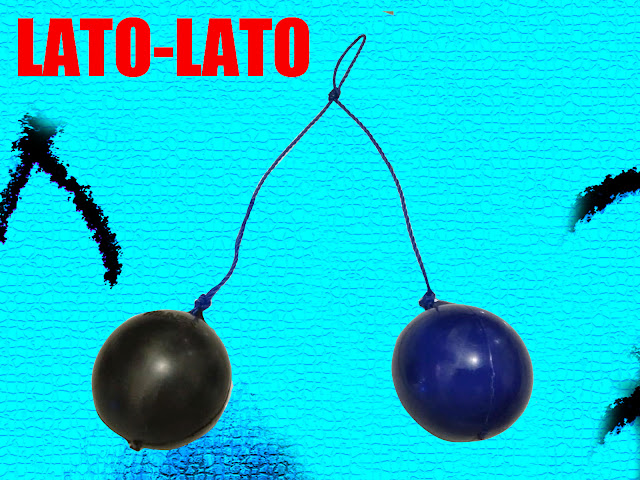Evolusi Karakter Lara Croft: Dari Game Klasik ke Ikon Pop Dunia!
Evolusi Karakter Lara Croft: Dari Game Klasik ke Ikon Pop Dunia
Lara Croft adalah salah satu karakter paling ikonik dalam dunia video game. Dikenal sebagai arkeolog petualang pemberani dalam seri Tomb Raider, karakter ini telah melampaui statusnya sebagai tokoh fiksi dan menjadi simbol kekuatan, kecerdasan, dan kemandirian perempuan dalam dunia game dan budaya populer.
Dalam artikel ini, kita akan membahas asal-usul karakter Lara Croft, perkembangan visual dan gameplay dalam seri Tomb Raider, serta pengaruhnya dalam budaya populer secara global.
1. Awal Kemunculan Lara Croft (1996)
Lara Croft pertama kali muncul dalam game Tomb Raider yang dirilis tahun 1996 oleh Core Design dan Eidos Interactive. Game ini hadir di platform PlayStation, Sega Saturn, dan PC. Dengan tampilan 3D yang revolusioner pada masanya, Lara Croft menjadi pionir dalam genre action-adventure.
Desain awal Lara Croft menampilkan tampilan tajam khas grafik 3D zaman itu—dengan proporsi tubuh berlebihan yang kemudian dikritik sebagai hiper-seksualisasi. Namun, terlepas dari kontroversi itu, Lara Croft berhasil memikat gamer dan kritikus berkat kepribadiannya yang kuat dan petualangan yang seru.
2. Popularitas dan Sukses Global
Popularitas Lara Croft melesat seiring kesuksesan game Tomb Raider yang terus dirilis setiap tahun. Ia menjadi ikon game perempuan pertama yang sukses secara komersial dan budaya. Lara muncul di majalah, iklan, hingga menjadi duta produk global.
Beberapa game terkenal dalam seri klasik antara lain:
- Tomb Raider II (1997)
- Tomb Raider III (1998)
- The Last Revelation (1999)
- Tomb Raider Chronicles (2000)
Di masa ini, Lara digambarkan sebagai wanita yang nyaris tak terkalahkan. Banyak fans menyukai karakternya yang tangguh namun tetap cerdas dan independen.
3. Perubahan Desain dan Reboot (2003–2013)
Setelah penurunan kualitas seri klasik, pengembangan game berpindah ke Crystal Dynamics. Reboot pertama dilakukan melalui Tomb Raider: Legend (2006), yang memperkenalkan Lara versi lebih manusiawi dengan grafis yang lebih realistis dan narasi yang lebih dalam.
Seri ini dilanjutkan dengan:
- Tomb Raider: Anniversary (2007)
- Tomb Raider: Underworld (2008)
Namun transformasi paling besar terjadi pada tahun 2013, saat game Tomb Raider (2013) diluncurkan. Lara Croft di sini diperlihatkan sebagai gadis muda yang mengalami evolusi emosional dari korban menjadi pahlawan. Ini adalah Lara yang lebih rentan, manusiawi, dan relatable.
4. Trilogi Reboot Modern
Trilogi reboot modern menjadi tonggak penting dalam perkembangan karakter Lara Croft. Seri ini mencakup:
- Tomb Raider (2013)
- Rise of the Tomb Raider (2015)
- Shadow of the Tomb Raider (2018)
Lara digambarkan sebagai arkeolog muda yang menghadapi tantangan berat dan trauma emosional. Game-game ini tidak hanya fokus pada aksi dan eksplorasi, tetapi juga pengembangan karakter yang lebih dalam. Visualisasi grafis yang luar biasa, cerita sinematik, dan gameplay yang dinamis membuat reboot ini sukses besar di pasaran.
5. Lara Croft di Layar Lebar
Kesuksesan Lara Croft di game membawa karakter ini ke layar lebar. Dua film pertama dibintangi oleh Angelina Jolie:
- Lara Croft: Tomb Raider (2001)
- Lara Croft Tomb Raider: The Cradle of Life (2003)
Film reboot diluncurkan pada 2018 dengan aktris Alicia Vikander sebagai Lara Croft, mengikuti gaya dan cerita dari game reboot tahun 2013.
Walaupun film-filmnya mendapat sambutan beragam, kehadiran Lara Croft di bioskop semakin memperkuat statusnya sebagai ikon budaya pop dunia.
6. Pengaruh Lara Croft dalam Dunia Game dan Budaya Populer
Lara Croft bukan hanya tokoh game. Ia telah menjadi simbol bagi perubahan peran perempuan dalam game. Karakter ini membuktikan bahwa protagonis wanita bisa menjadi sentral dalam cerita aksi tanpa harus menjadi objek semata.
Beberapa dampak besar Lara Croft di dunia game dan pop culture:
- Menginspirasi banyak karakter perempuan kuat di game lain
- Menjadi wajah gerakan "girl power" di era 90-an
- Masuk Guinness World Record sebagai “Most Recognizable Female Video Game Character”
- Didukung oleh jutaan fans di seluruh dunia, dari komunitas cosplay hingga penggemar teori lore-nya
7. Kontroversi dan Kritik
Sejak awal kemunculannya, Lara Croft tidak lepas dari kritik. Desain karakter yang dianggap terlalu seksual di masa lalu menjadi kontroversi, terutama di kalangan feminis dan pengamat media. Namun seiring waktu, karakter Lara berevolusi menjadi lebih realistis dan inspiratif, menjauh dari eksploitasi visual semata.
Developer Crystal Dynamics dan Eidos Montreal bahkan mengedepankan penggambaran karakter yang lebih kuat, empatik, dan kompleks dalam seri reboot. Hal ini disambut positif oleh gamer modern yang menginginkan representasi karakter wanita yang lebih manusiawi.
8. Masa Depan Lara Croft
Hingga kini, Square Enix dan Crystal Dynamics masih terus mengembangkan waralaba Tomb Raider. Sebuah game baru sudah diumumkan akan dikembangkan menggunakan Unreal Engine 5, menjanjikan kualitas grafis dan gameplay yang memukau.
Tak hanya itu, Amazon juga kabarnya tengah mempersiapkan serial live-action Lara Croft yang akan tayang di Prime Video. Semua ini menunjukkan bahwa karakter Lara Croft masih sangat relevan dan terus berkembang seiring zaman.
9. Fakta Menarik Tentang Lara Croft
- Lara Croft awalnya didesain sebagai laki-laki!
- Nama “Lara” diambil dari katalog telepon Inggris untuk nama yang terdengar aristokrat
- Ada lebih dari 15 game utama dalam seri Tomb Raider
- Lara Croft pernah tampil sebagai karakter cameo di berbagai game lain
- Lara Croft memiliki patung lilin sendiri di Madame Tussauds
10. Kesimpulan
Lara Croft adalah karakter yang tidak hanya bertahan, tapi juga berkembang mengikuti perubahan zaman. Dari simbol seks di era 90-an, menjadi figur pahlawan yang kuat dan kompleks di era modern, Lara Croft membuktikan bahwa karakter wanita bisa menjadi pusat cerita dengan cara yang inspiratif dan penuh daya tarik.
Dengan pengaruhnya yang luas, baik di dunia game, film, maupun budaya pop global, Lara Croft telah mengukir namanya sebagai salah satu ikon paling penting dalam sejarah industri hiburan. Bagi banyak orang, ia bukan sekadar karakter game, tetapi representasi dari keberanian, eksplorasi, dan pemberdayaan diri.
Apakah kamu sudah pernah main salah satu game Lara Croft? Atau punya kenangan tersendiri dengan karakter ini? Tulis di kolom komentar ya!
Kata Kunci: Lara Croft, karakter Tomb Raider, sejarah Lara Croft, evolusi game Lara Croft, ikon game wanita
Hashtag:
#LaraCroft
#TombRaider
#GameLegenda
#KarakterGameWanita
#LaraCroftEvolution
#SejarahGame
#LaraCroftMovie
#GameAdventure
#GamingHistory
#CrystalDynamics



